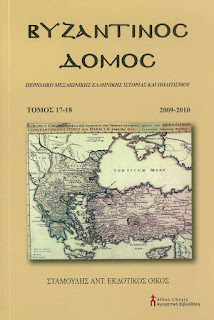Summary
Patapios Monk of Kafsokalyvia Librarian of the Holy Hermitage of Kafsokalyvia. The Asia Minor saints Athanasios the Athonite, Maximos of Kafsokalyvia and Gregorios of Sina. Their spiritual relations and their contribution to the monasticism of Mount Athos.
Since the first centuries when the Holy Mountain of Athos was systematically inhabited, the Holy Mountain fathers continued the monastic tradition of Christian Egypt, Palestine and especially Asia Minor, as it was cultivated in the monastic centres of Mount Latros, Galesion, Olympos of Bithynia, in the monasteries and anchorete residences of Cappadocia and in the Monastery of Soumela and the other monasteries of Pontus in Asia Minor.
Most of the great holy figures that contributed to the later significant formulation of Mount Athos were of Asia Minor origin, who firstly exercised and took their foundations in Greek monastic institutions of Asia Minor. In this paper various aspects of their pious lives are approached, focusing on those points that linked them with Asia Minor, an area that bore so many saints.
At the beginning of the paper there is a short reference to saint Efthymios the Younger (9th century) and saint Vlassios of Amorio (9th century) who first diffused the tradition of Asia Minor monasticism to Athos, the new monastic centre of Hellenism.
Consequently, there is adequate reference to the most important Mount Athos figure of all ages, saint Athanasios the Athonite (10th century), the founder of Megisti Lavra and legislator of organized monasticism. His spiritual, founding, organizing and legislative work is particularly stressed, through which he reformed the monastic habits of traditional monks of Mount Athos, diffusing the organized communal life and the Stouditian tradition, which he knew since the time he was in Asia Minor.
Finally, there is extensive reference to the two great quietists of the 14th century, sain Maximos of Kafsokalyvia (t c. 1365) and Gregorios of Sina (tc. 1341). There is also a record of there spiritual relations and their offer both to the Mount Athos monasticism and the spiritual cultivation of the peoples of the Balkans.

